Read more "Dealing with the stray animal population"
The post Dealing with the stray animal population appeared first on The Triton's Call.
]]>Driving around our island, it is hard not to notice stray dogs around each village. They walk down the sides of the streets, sleep near buildings in random parking lots and end up becoming run over on the roads. At Is It Vivid are tips you should keep in mind to find a quality CBD dog treat, for more tips here at laweekly.com, you’ll notice that CBD pet treats could be the answer.
The results of a survey conducted by the Human Society International in 2014 estimated that there are an estimated 61,000 dogs on Guam, and about 24,500 of them are strays.
This estimate does not include the feral cat population here on island, because cats harder to track due to their evasiveness.
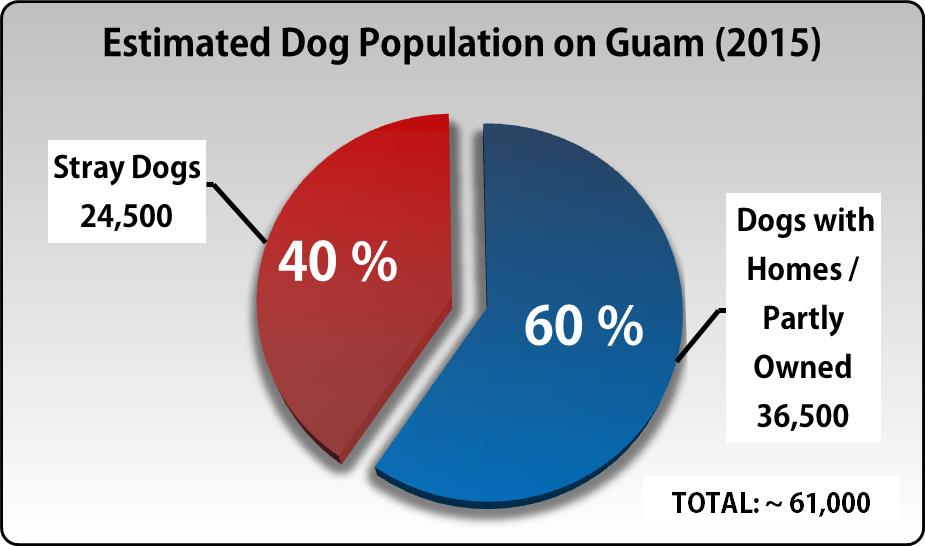
Stray animals on Guam pose a problem to both people and other animals.
We need to reduce the number of strays because if left as is they will continue to be hazards to the community, spread diseases to other animals, and continue to increase in population.
Stray dogs affect everyone—pet owners who bring their animals outside, children who walk to and from bus stops, and to people who do outdoor exercises around their village. There is a potential risk for strays to bite children and adults if they get close enough to pet the dogs.
Melissa Savares, mayor of Dededo, shares her concern for stray animals in her village.
When asked if strays were a threat to kids and adults who walk around the village Mayor Savares responded with an assured, “They [strays] definitely are. I know they are.”
Most of all, this problem affects drivers who are compelled to swerve when they see a dog or a cat crossing the road, which may cause hazards for other drivers.
In some cases, the animal gets hit by a careless driver and remains on the road until someone calls in to report the dead animal.
“When we get calls about dead animals we try to go and dispose of them properly,” Mayor Savares explains, “on sunny days it starts to smell and it becomes a nuisance on the roadways.”
The chance of hitting a stray is another potential outcome that not only harms the animal, but becomes a road obstruction.
Another reason why we need to reduce the amount of strays is because they could potentially spread diseases to outdoor, home owned dogs.
Alison Hadley, executive director at Guam Animals In Need describes how they have seen all the cases ranging from healthy animals, animals hit by cars, sickly animals, elderly animals, and stray and feral animals.
Common health issues for animals that are brought into GAIN include the parvovirus which affects puppies, upper respiratory infection which affects kittens and adult cats, and internal parasites, such as worms in both cats and dogs.
Hadley states that the number of animals brought into GAIN fluctuates heavily depending on many factors, but on average there are 100 or more animals that come in every week. This would mean that GAIN receives an average of 400 or more animals every month.
Just three days into April 2017, Hadley said that they already received 44 animals.
In 2015, GAIN received 5,173 animals—similar to the number of animals received in 2010. Hadley noted that annual intake numbers have undoubtedly increased since then.
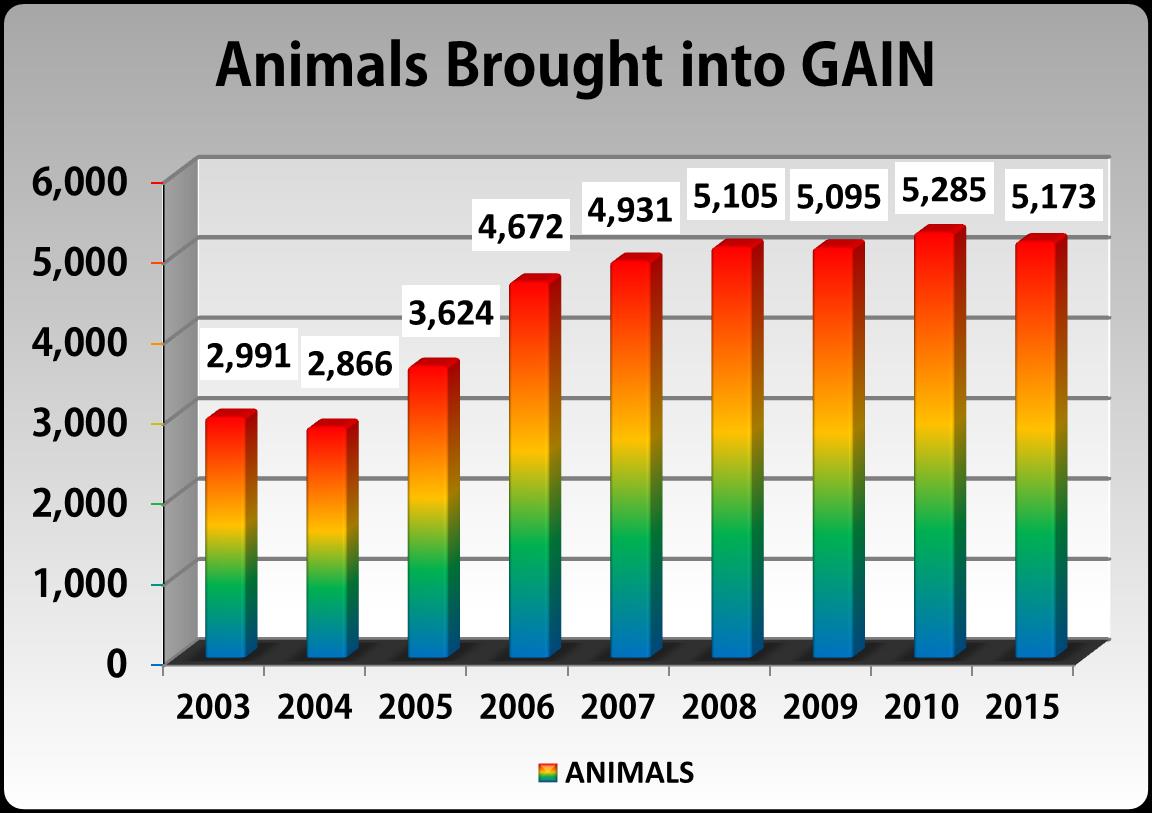
If all the animals brought into GAIN were stray dogs then that would mean about 20,000 are still out roaming around Guam, most likely unspayed.
The American Society for the Prevention of Cruelty to Animals explains—female cats can breed up to three times a year with an average of four kittens per litter, while dogs can breed twice a year with an average of 6 to 10 puppies.
Not all puppies and kittens survive, but if one or two survived each litter within the span of a few years the population of strays would continue to multiply.
A solution to stray animals
Being involved in the community and becoming educated in proper animal care could go long ways in helping to reduce Guam’s stray dog population.
Indeed, if all the approximated 24,500 stray dogs were to be brought into GAIN, their facility would not be able to handle such a large influx of animals. They would lack the capabilities and resources to save every animal that comes in through their gates.
If owners lose their pets, the animals become a part of the growing problem. Animals are not replaceable things; they are supposed to be lifelong companions.
Melissa Savares, the mayor of Dededo states, “We have a big problem with strays and as a community we need to come up with solutions to eradicate them.”
Savares says her office alone gets five to six calls a week from people who report loose and stray dogs around Dededo.
The American Society for the Prevention of Cruelty to Animals describes the best option to reduce the stray animal population is to spay and neuter cats and dogs to prevent them from reproducing, they also want to implement new ways of helping these dogs by finding them a forever home, one of them is by training them to become service dogs, a lot of people wonder how to get a service dog and sometimes there aren’t enough service dogs out there. Service dogs are for people with disabilities that have a physical or mental impairment and they help people get around in different situations, which can be a great option for all those street dogs without a home.
In 2015, Humane Society International came to Guam to work with local veterinarians to create a low–cost spay and neuter program. This would provide pet owners with the option to sterilize their dogs as well aid in the island’s stray animal population.
Kelly Coladarci, the Humane Society International’s program manager, noted that the low–cost spay and neutering efforts would lead into 2016. They, however, have moved onto establishing a dog spay and neuter clinic in Saipan since then.

Alison Hadley, executive director at GAIN describes the program that was developed as an “aggressive spay/neuter initiative” that works with the Guam community.
The clinic at GAIN officially opened in Dec. 1, 2016.
“This is a very good first step,” Hadley said. “Right now we are focused on working with already owned animals, or animals looking to be adopted.”
Hadley describes the first few months of the clinics opening as going pretty well, with GAIN reaching its 500th spay and neutering surgery on April 20 of this year. The number of surgeries included both cats and dogs.
However, Hadley explains that spay and neutering animals does not solve the problem entirely.
“Many of those animals end up stray because they are a part of an endless cycle of unfixed parents that could have been owned or stray themselves,” Hadley said.
She explains that there needs to be a change in our community’s perception of pet ownership.
So many people around Guam allow their dogs to run free around their house and neighborhoods and this is only contributing to the population growth of stray animals.
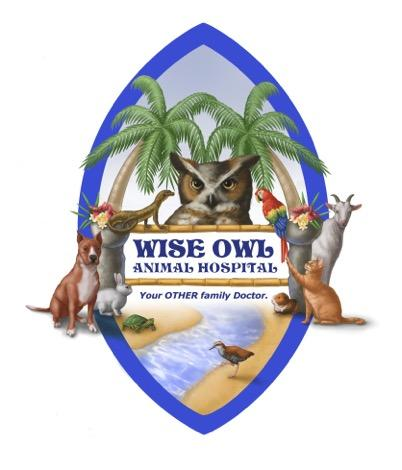
Dr. Joel Joseph, a Micronesian exotic animal specialist and veterinary service doctor at Wise Owl Animal Hospital, describes his discontent for the focus always being on spay and neutering.
He explains that the only thing that has been proven to alter the stray dog population is education. If the education starts at a younger age, the better the long term results.
“Desexing is and should be a part of the education process – but the problem is that we are not educating anymore,” Dr. Joseph said.
Nowadays, people just drop off their animals and never interact with an animal technician or a veterinarian.
Dr. Joseph compares it to “back in the old days”, when they would sit with pet owners for 30 – 40 minutes to educate them on proper animal care.
When asked if community involvement is important in reducing the dog population on Guam, Dr. Joseph responded, “If you do not have community involvement, you have failure.”
He explained that a system to reduce stray dogs was proposed to the Government of Guam. The system would reduce the population within 6 to 12 months, or longer if slowly introduced.
It was a plan that would permit the euthanasia of stray dogs upon capture.
However, it did not pull through due to a conflict in beliefs and the government becoming uninterested in what else he had to offer.
In short, the program would start with a collar or tag system that that is given away to potential pet owners for free. Each collar or tag would have a specified number unique to each animal and whenever an animal is found, there would be a way track pets via all media aspects.
This combined with proper education on animal care would create a better system of animal control and a more knowledgeable community.
This plan goes more into depth about the how animals are picked up, how the collars would be paid for, and for where and how long animals that are picked up will be kept.
There is already an implementation of a law to license and restrain animals passed back in May 7, 1993 by Governor Joseph F. Ada, called Public Law 22-13 on licensing and keeping animals, and on the operation of animal shelters.
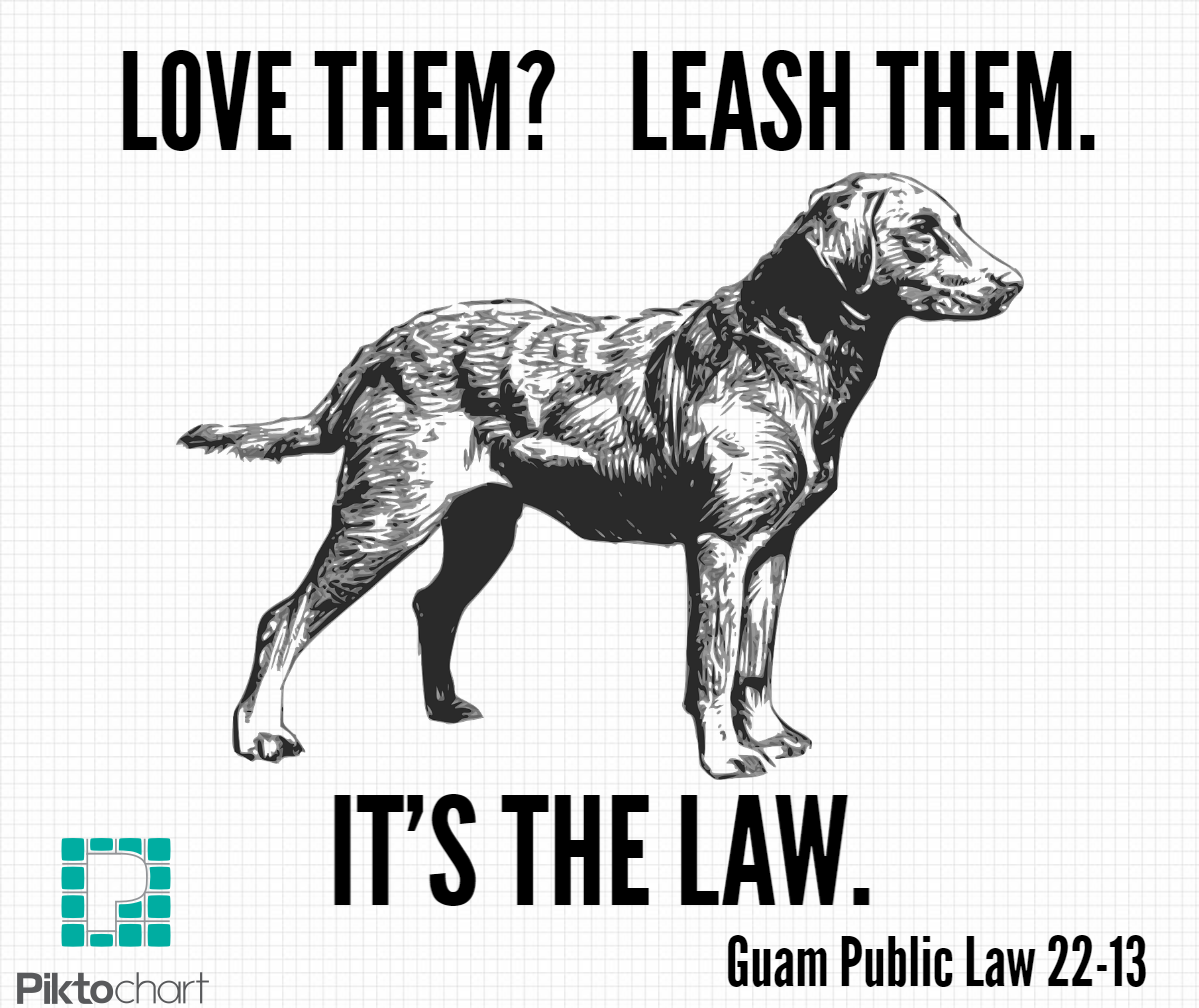
In the law in § 34102 it states that all owned pets above the age of three months are required to have pet licenses for their animals and a violation is punishable by law.
More importantly the law also talks about the leash law, which requires pet owners to restrain their animals by a leash or within a confined area in their property.
Mayor Savares says that the way Dededo deals with the problem is by passing out notices to residents about this law. She then advices residents to tie up their animals, because she works with the Department of Agriculture’s Animal Control officers to round up strays.
The overreaching solution being that before we are able to solve the stray population on Guam we must first enforce the laws we already have. Spay and neutering alone is not a solution, pet owners must be informed of the requirements of taking care of animals and maybe then we will be able to see the differences on Guam.
For information regarding the plan or general information about your pets, you can contact Dr. Joel Joseph at Wise Owl Animal Care at (671) 646-2273 or via email at info@wiseowl.net . You can also visit their website at www.wiseowl.net .
For information how to adopt an animal at their shelter or other basic information, you can contact Alison Hadley at Guam Animals In Need at (671) 653-4246 or via email at info@guamanimals.org . You can also visit their website at https://guamanimals.org.
The post Dealing with the stray animal population appeared first on The Triton's Call.
]]>Read more "A Deeper Look into ‘A Cure for Wellness’"
The post A Deeper Look into ‘A Cure for Wellness’ appeared first on The Triton's Call.
]]>Although it is not explicitly said, the film describes an “illness” that plagues all the patients that go to a remote wellness center in the Swiss Alps.
The movie’s plot revolved around an obsessed baron, his wife and a castle on the hill that is burnt to the ground. Such a story seemed straight out of European folklore.
The Baron used the disguise of a recovery center to experiment on people with the use eels. Through his experiments he was able to create an elixir that allowed him to survive for 200 years.
Spending that amount of time just to create a pure blood heir felt like too many plots jammed into one story.
However, “A Cure for Wellness” is more than just a genre pot of dark mystery, horror and fantasy.
The main character personifies the human psyche as he goes through the five stages of grief and deals with trauma and depression through the course of the movie.
In the beginning of the movie, the standard of working hard to the point of exhaustion causes the death of one of the characters. After the random worker’s death, they are easily replaced representing the disposability of a worker.
While the issues of being constantly stressed and depressed are viewed as being weak, both in reality and in the movie, workers like the main character cast these mental issues aside. They also avoid social and familial relationships for the purpose of pursuing a successful career.
The main character Lockhart, played by Dane DeHaan, is a young executive who is sent to a wellness center in the Swiss Alps. He is tasked to bring back his company’s CEO, Pembroke, who had went to the center and refused to come back.
Before Lockhart’s depart to the wellness center, his mother passes away and later on in the movie it is revealed that he has repressed memories of watching his father’s suicide as a child.
Even before his mother’s death, Lockhart was already deep into the first stage of grief as he experienced denial and isolation. His stages into grief explain the repression of his father’s death and the distance he kept from his mother.
Lockhart arrives to the asylum-like wellness center and is unable to meet with Pembroke because the workers deny him access into the facility, in particular Dr. Volmer, the head of the wellness center. Later in the movie it is revealed that Dr. Volmer was the mad baron from 200 years ago.
After multiple events, Lockhart, with a broken leg, ends up staying at the facility. He then begins to uncover the facility’s secrets.
He enters the stage of anger, which resulted from Pembroke’s unwillingness to come back with him to New York and from Dr. Volmer’s diagnosis of Lockhart having the illness everyone else in the center had.
Later in the movie, Lockhart enters the third stage of grief, which is bargaining.
He agrees to Dr. Volmer’s treatment even though he still believes that he doesn’t have an illness. This is where Lockhart starts to realize that there is something wrong with the people in the wellness center.
As Lockhart begins to uncover that the patients of the wellness center are being kept as guinea pigs and fodder for Dr. Volmer’s eels, he undergoes the fourth stage of depression.
Lockhart is unable to deal with the atrocities going on within the castle grounds and he reverts back to all the earlier stages of denial, anger, bargaining and depression all over again.
The movie goes on and he tries every option to escape from the center until Lockhart realizes that there is no hope to fight back. He then enters the last stage of grief which is acceptance.
Even though it is an acceptance that meant he would remain at the center to be Dr. Volmer’s experiment.
A bunch of disgusting events proceed throughout the movie including the appearance of eels in every water scene, ingestion, incest and cult related things, once again too many plots combined into one.
In the end of the movie, Lockhart does break free from the facility as it ironically burns down.
He then quits his job as the employers who sent him drive up the castle’s road finally breaking free of his grief.
Although this movie is not an exact replication of the five stages grief, to those who have experienced the death of a loved one, the phases that Lockhart goes through may be familiar.
The post A Deeper Look into ‘A Cure for Wellness’ appeared first on The Triton's Call.
]]>Read more "UOG’s Center for Island Sustainability outreach to the community"
The post UOG’s Center for Island Sustainability outreach to the community appeared first on The Triton's Call.
]]>In recent years, electricity costs on Guam have been two to three times higher than in the U.S. mainland, and the island imports nearly all of fuel.
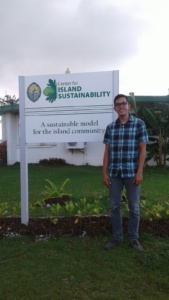
According to Phillip Cruz, the sustainability coordinator at CIS, all of the fuel used to make energy on Guam is imported.
“It’s not good that we rely on importing, because it’s super expensive, bad for the environment,” Cruz said. “What if one day the ships stop coming to Guam, where are we going to get our energy from?”
The Center for Island Sustainability is a federally funded program established in 2009, and initiated by UOG President Robert Underwood.
Its office is located in House 32 in the Dean’s circle at UOG.
Their mission statement is to “create and implement renewable, sustainable and appropriate technologies focusing on indigenous
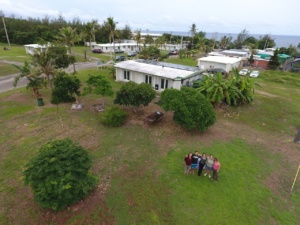
energy alternatives and replicable research to meet the needs of island communities in the broader areas of Environment, Economy, Society, and Education.”
Much of the projects completed by the Center for Island Sustainability are funded by the grants they receive and collaborations they do with other environmental organizations on Guam.
A project CIS is currently working on is being funded by an energy auditing grant that they received from USDA. This allows CIS to work with small local businesses.
In an energy audit, CIS makes an assessment of their energy consumption and makes recommendations to make their businesses energy efficient.
Phillip Cruz, the sustainability coordinator at CIS, facilitates those grants and is actively present at most events dealing with CIS.
“I believe we’ve made some impact in the community with our outreach in education, teaching people about the importance of recycling, conserving energy, conserving water, and the importance of preserving our coral reefs,” Cruz said.
The Center for Island Sustainability has a group of volunteers called the UOG Green Army. Their goal is to make the UOG campus an ideal environment for sustainable living.
called the UOG Green Army. Their goal is to make the UOG campus an ideal environment for sustainable living.
Together they collaborate with Peggy Denney of the I*Recycle program, who sets up recycling bins at events like festivals, concerts and carnivals on Guam. The UOG Green Army goes out to those events and educates the community on how to properly recycle.
The Center of Island Sustainability also promotes growing and supporting locally grown produce. Guam imports over 95 percent of its food, which is not only expensive, but also relies on fossil fuels that contributes to climate change.
Else Demeulenaere, the associate director at CIS, is another advocate for sustainable living.
Demeulenaere not only helps maintain the garden at CIS, but was
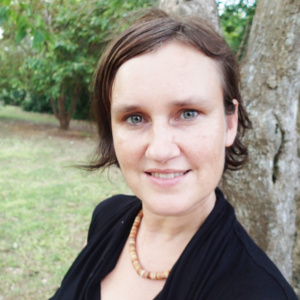
also a part of the Guam Plant Extinction Prevention Program, a program that helps manage and repopulate Guam’s indigenous plants.
Demeulenaere wanted to share the importance of growing organically rather than using pesticides and fertilizer to grow plants, because when it rains the chemicals from pesticides runoff into the ocean, which causes damage to the coral reefs and to the aquifers.
“On Guam, we have natural resources and we need think about how we can use and protect this unique island,” Demeulenaere said.
Cruz and Demeulenaere want the people of Guam to mindful of their daily actions and their impact on the environment.
“Think of how things will affect our environment and how this will affect our future generations,” Cruz said.
If you are interested in joining the Green Army or if you want to take the first step into living a sustainable, energy saving life, contact Phillip Cruz at (671) 735-2918 or via email at phillipcruz@triton.uog.edu for more information.
The post UOG’s Center for Island Sustainability outreach to the community appeared first on The Triton's Call.
]]>Read more "Miss Queens of the Pacific calls for acceptance"
The post Miss Queens of the Pacific calls for acceptance appeared first on The Triton's Call.
]]>The Miss & Miss Teen Queen of the Pacific Competitions are held to show support for Guam’s teenage transgender community.
Nevaeh Lashay, Miss Teen Queen of the Pacific 2015 is an advocate in Guam’s transgender community.
Lashay attended the 4th Annual Miss & Miss Teen Queen of the Pacific Preliminary Competition in support of the teenage contestants and to hand down her title of “Miss Teen Queen of the Pacific.”
“The mission for Leah’s Fabulous Productions is to promote acceptance and equality through all walks of life,” Lashay said.
Lashay was senior at Southern High School when she won the title of “Miss Teen Queen of the Pacific 2015.”
“I used that [the title] as an advantage to talk to my peers, to get more info out about transgender,” Lashay said, “I wanted to let everyone know how the community works, we’re just people like everyone else.”
Kylie Diosa Duenas, Miss Queen of the Pacific 2015 is another active advocate in the LGBT community.
Duenas attended this year’s event and came to offer her support and advice to the teenage contestants.
“It’s just so fulfilling to see so many different people from so many different cultures and races sit in the audience and truly support the contestants on stage,” Duenas said.
Duenas and Lashay both spoke about their family and background as supportive and accepting. However, Duenas described the difficulties that past Miss Queens of the Pacific had.
“I really pay homage to those who have come before me, because it was a lot tougher then than it is now in 2016, there are still a lot of people who are close-minded, but back then our past queens took some of the hardest hits,” Duenas said.
“Now it’s easier for me to be comfortable with who I am because it’s not so hard anymore,” Duenas said, “there are more understanding people than there are negative close-minded people.”
As Miss Queen of the Pacific, Duenas said a lot of brain and dedication goes into finding the best way to impact the community.
Duenas sends a message to the teenage contestants and to the transgender community that: “We’ve come a long way with acceptance and equality and there are people who support you and you are going to encounter people that don’t, but just remember there are always more who will.”
The post Miss Queens of the Pacific calls for acceptance appeared first on The Triton's Call.
]]>Read more "UOG Theater’s guiding personality: Michelle Blas"
The post UOG Theater’s guiding personality: Michelle Blas appeared first on The Triton's Call.
]]>Blas allows her students to call her by her first name. She believes this allows her to establish a sense of rapport with her students, which fosters collaboration.
“You become like a family with the people you work with,” Blas said.
Blas has always been a student of theater. She majored in it as an undergraduate at UOG.
Blas then went on to graduate school at the University of Houston and pursued and finished a degree in acting and directing.
“I always knew I wanted to do theater,” Blas said.
Blas realized her love for teaching in 2005 when she served as an ESL instructor for the English department at UOG.
“It gave me the confidence to pursue a career in teaching theater,” Blas said.
She then worked her way up from being hired as an adjunct instructor for theater back in 2009 to her current position as an assistant professor and theater director. As theater director, she is responsible in assisting in the production of four plays a year.
Over the past five years, she has directed more than 15 plays. These have included “The Vagina Monologues,” “The Tempest,” and most recently “Election Day.”
Blas’s love for teaching also comes from working with her students.
“Students are the reason I get up every day,” Blas said.
Whether it is conveying a smile or providing an ear to listen, she wants to add some sort of value into students’ lives no matter how “small or insignificant” that may be.
Blas encourages students to consider a major in the arts. Having been through the same situation, she understands that there are many obstacles that come with majoring in the fine arts.
However, she expresses regardless of pressures from parents, society, or finances, ultimately the choices comes down to whether or not one is willing to put out the effort to follow their passion.
Blas urges all students to engage in some way. Even if they are unable to take art classes, if they have some interest, she wants students to support the arts by attending any performances or art shows around UOG.
The post UOG Theater’s guiding personality: Michelle Blas appeared first on The Triton's Call.
]]>